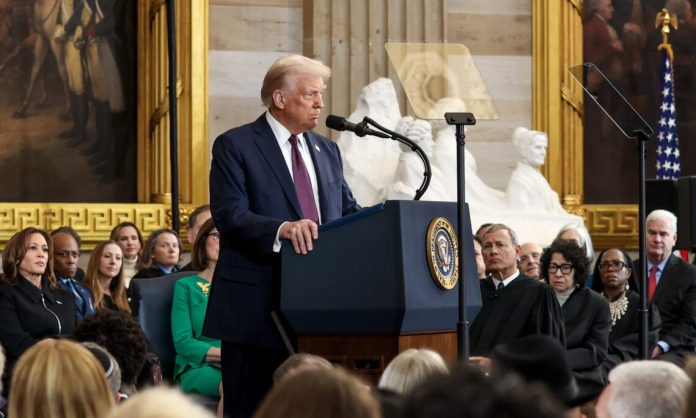Chinese companies are likely to increase their production of solar panels in the US to mitigate any fallout from possible higher tariffs on their exports from Southeast Asia next year after Donald Trump begins his second term in the White House in January, according to industry observers.
Demand in the US is expected to increase even if Trump acts on his plan to cancel President Joe Biden’s US$400 billion incentives for clean energy projects under the Inflation Reduction Act (IRA) enacted in August 2022, they said.
“Demand for solar will remain strong, since it is a proven technology and customer awareness and acceptance is high,” said Frank Haugwitz, founder of Asia Europe Clean Energy (Solar) Advisory. “It is very affordable compared to just a few years ago.”Solar power equipment, lithium batteries and electric vehicles are the so-called “new three” industries, where China is seeking to strengthen its dominance in production. They are some of the bright spots in China’s economy, which has recently suffered from a slump in the property market and private consumption.
Why the EU, US are concerned about China’s overcapacityThe Biden administration last month announced a preliminary countervailing duties of 2.9 to 30 per cent on solar cells from Vietnam, Cambodia, Malaysia and Thailand from as early as April. Those shipments to the US amounted to US$11.9 billion last year, according to official data. Most solar-panel factories in Southeast Asia are owned by Chinese entities, Haugwitz noted.
It came after a five-month investigation into allegations by US makers First Solar, Qcells, Meyer Burger and REC Silicon that the Chinese firms benefited from subsidies. The US had decided in September to double the tariff on Chinese solar cells to 50 per cent. Solar cells are components assembled in panels for converting sunlight to electricity.
Some Chinese companies have already set up production facilities in the US to benefit from the IRA incentives, while others are likely to quicken their expansion to prepare for Trump’s worst-case scenario.
Indonesia opens largest floating solar power plant in Southeast Asia as part of green pushFor example, Shanghai-based JinkoSolar opened a US$50 million, 400 megawatt-a-year facility in Florida. Last year, it won government approval to spend US$52 million to expand it by 800MW. Trina Solar, based in Changzhou in eastern Jiangsu province, last year announced a US$200 million facility in Texas capable of churning out 5GW of solar modules.
US solar imports from China fell to 1 per cent in 2018 from more than 50 per cent in 2011, according to Reuters, after waves of duties since 2012 by the Obama, Trump and Biden administrations.
Even so, Chinese manufacturers lifted their combined global share of the solar supply chain to 80 per cent last year from about 44 per cent in 2012 by shifting production to Southeast Asia to circumvent tariffs not only in the US, but also the key markets of Europe, India and Brazil.
China’s largest photothermal power facility drives development of new form of energyPrices of made-in-China solar cells have tumbled by 39 to 48 per cent from a year earlier, according to data from Daiwa Capital Markets, pressured by a price war and excess capacity in the industry. Prices of polysilicon, the key upstream raw material, have plummeted 43 per cent.
“On its own merits, solar is the fastest growing source of energy in the world and the cheapest source of electricity for households,” said Sonia Dunlop, CEO of Global Solar Council, an industry body. “We fully expect the solar revolution to continue in the US and the rest of the world, during a Trump administration.”Total installed capacity could increase 29 per cent globally to 593GW of solar farms this year, in addition to an 87 per cent surge in 2023, according data compiled by Ember, a global energy think tank.
US solar module production capacity has nearly quadrupled to over 31GW since the IRA was enacted, while some 75GW of solar farms were installed over the same period, energy consultancy Wood Mackenzie said in a report in September.
At the current expansion pace, the US will soon have enough American-made solar panels to meet its own demand, US trade organisation Solar Energy Industries Association said in a statement on November 6.
“Nearly 9 in 10 Americans support these policies, which are uplifting communities in states like Ohio, Texas, Georgia, and South Carolina with thousands of jobs and billions of dollars of investments,” its CEO Abigail Ross Hopper said, without mentioning Trump’s plan to halt Biden’s incentives.






